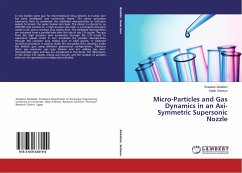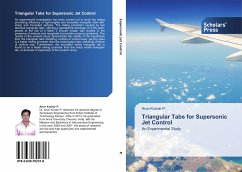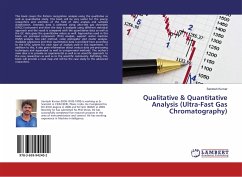
Micro-Particles and Gas Dynamics in an Axi-Symmetric Supersonic Nozzle
Versandkostenfrei!
Versandfertig in 6-10 Tagen
47,99 €
inkl. MwSt.

PAYBACK Punkte
24 °P sammeln!
A new biolistic gene gun for micromolecular drug delivery to human skin has been developed and numerically tested. The device generates supersonic flow to accelerate the mediated microparticles to sufficient speeds to breach the outer human skin layer. The device is referred to as CDN-WPI and consists of; a high pressure gas tank, a convergent-divergent nozzle (C-D), and a constant area mixing duct. The mediated microparticles are entrained from a parallel inlet after the exit of the C-D nozzle. The gas from the high pressure tank accelerates through the C-D nozzle to supersonic speeds which i...
A new biolistic gene gun for micromolecular drug delivery to human skin has been developed and numerically tested. The device generates supersonic flow to accelerate the mediated microparticles to sufficient speeds to breach the outer human skin layer. The device is referred to as CDN-WPI and consists of; a high pressure gas tank, a convergent-divergent nozzle (C-D), and a constant area mixing duct. The mediated microparticles are entrained from a parallel inlet after the exit of the C-D nozzle. The gas from the high pressure tank accelerates through the C-D nozzle to supersonic speeds which in turn accelerate the powder microparticles through the constant area mixing duct to high speeds. A validated numerical procedure is used to study the two-phase flow dynamics inside the biolistic gun using different geometrical configurations. Different driver gas pressures, gas type (helium and air), adding gas swirl, microparticles types and size are considered in this study. The dimensions of the device C-D nozzle, mixing duct length, and the number of particles inlets are the geometrical configurations studied.












